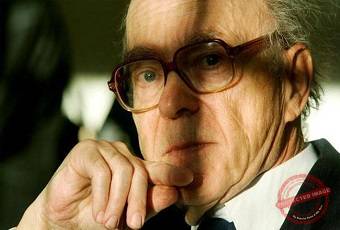At the age of 88, Irwin Rose a famous biochemist, who won the Nobel Prize for his discovery of molecule’ Ubiquitin’, breathed his last. He shared this Nobel Prize with Avram Hershko and Aaron Ciechanover. Irwin Rose died in his sleep in Deerfield, Massachusetts as according to spokeswomen Janet Wilson , University of California,UCI, Irvine.
- As per UCI , chancellor Howard Gillman’s statement Irwin Rose always had good intellect and unwavering eagerness about the fundamental chemical and biological process which are basics of life.
Nobel Prize works
- His outstanding and groundbreaking work on enzymes like Ubiquitin, that breakdown and dispose off unwanted proteins in animals and in plants are well known.
- His research helped many scientists in understanding the molecular activities of cervical cancer, cystic fibrosis that occurs due to failure of clean-up process.
- An example is cancer drug Velcade, that interferes with cells protein- chopping machine
- Ubiquitin molecule is also involved in quality control of newly made proteins and in repairing faulty DNA.
- Speeding up of chemical reactions and acting as signals are some of the functions performed by 1,00,000 different proteins present in human cells .
- Mr Irwine was never satisfied with his findings and his accomplishments but always aspired to make new discoveries as said by chemistry professor James Norwick in a statement
Irwine Rose
- He was born on 26th July 1926 in New York,USA.
- Fox Chase Cancer Centre in Philadelphia, is the place where he spent most of his career in researching.
- Late 1970’s or early 80’s saw his Nobel Prize winning work being carried out at this cancer centre.
- Irwine joined UCI Irvine as a researcher after retiring to Laguna Beach in South California in 1997
DNA- what is it??
- DNA stands for deoxyribonucleic acid.
- DNA is a molecule that encodes the genetic instructions used in the development and functioning of all living organisms .
- It is a nucleic acid with proteins and carbohydrates.
- Most DNA molecule has two strands of biopolymer coiled to form double helix.
- DNA was first identified by Fredrick Miescher in 1871.
- Double helix structure was found by James Watson and Francis Crick
AffairsCloud Recommends Oliveboard Mock Test
AffairsCloud Ebook - Support Us to Grow
Govt Jobs by Category
Bank Jobs Notification





